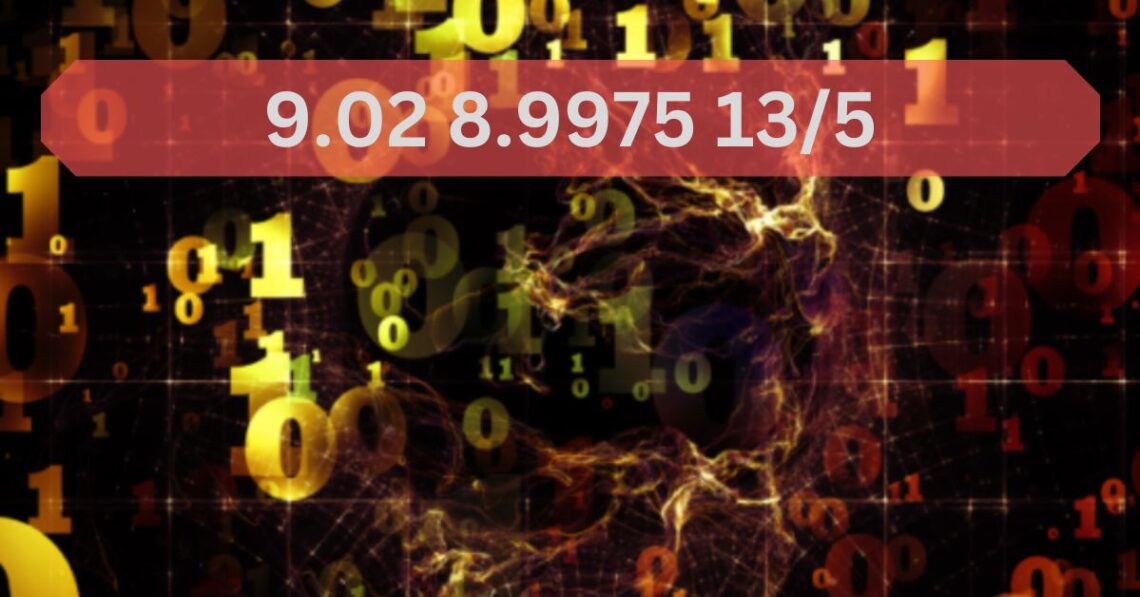People are surrounded by numbers every day—but not all numbers carry the same level of importance or meaning. In practical fields like arithmetic, accounting, economics, engineering, and science, decimals and fractions serve as more than symbols; they function as tools for precision, efficiency, and problem-solving.
In this article, we explore the values 9.02, 8.9975, and 13/5, diving into their significance, real-world applications, and why understanding them matters more than you might think.
Decimals: An Overview
What Are Decimal Numbers?
Decimal numbers operate within the base-10 system, combining a whole number and a fractional part separated by a decimal point. They allow for fine-tuned representations of values that fall between whole numbers.
Why Are Decimals Important?
Decimals are everywhere:
- In financial transactions
- In scientific measurements
- In technological applications
- In everyday calculations
Their precision is critical in environments where small differences have big consequences.
Analyzing 9.02 and 8.9975

9.02: Slightly Above Nine
- Decimal Position: 9.02 is slightly more than 9.
- Practical Use: This might be a weight (e.g., 9.02 kg) in a logistics setting or a measurement of length in construction.
- Why It Matters: Even minor increases like 0.02 can determine regulatory compliance or influence cost and output in production.
8.9975: Just Below Nine
- Decimal Precision: 8.9975 is very close to 9—just 0.0025 less.
- Practical Use: Often appears in scientific research, where extremely accurate measurements (e.g., chemical volumes, equipment calibration) are vital.
- Why It Matters: In experimental data or product manufacturing, rounding off could lead to errors in results or performance issues.
The Strength and Flexibility of Fractions
Why Use Fractions Like 13/5?
Fractions offer exact mathematical relationships without the rounding that decimals often require.
Key Advantages:
- Precision: Fractions retain complete numerical integrity.
- Simplified Arithmetic: Especially useful in cooking, carpentry, and engineering.
- Easy Conversion: The fraction 13/5 = 2.6 in decimal form.
- Versatile Presentation: Can be adapted for clearer communication or applied use depending on the context.
Real-Life Applications of 9.02, 8.9975, and 13/5

1. Finance
- Interest Rates: A small change from 8.9975% to 9.02% can significantly affect long-term financial products.
- Tax Calculations & Profit Margins: Require decimals and fractions to prevent cumulative errors.
2. Science and Engineering
- Precision Instruments: Whether you’re building a bridge or testing a chemical formula, precise figures are non-negotiable.
- Safety Protocols: A measurement deviation as small as 0.0225 units could pose safety risks.
3. Education
- Teaching decimals and fractions strengthens students’ analytical thinking and prepares them for STEM fields.
4. Culinary Arts
- Recipe Scaling: Knowing that 13/5 = 2.6 helps in adjusting servings precisely.
- Ingredient Control: Over- or under-measuring ingredients can ruin dishes.
More Than Numbers: Potential as Codes or Identifiers
In some cases, sequences like 9.02, 8.9975, or 13/5 might not be values at all:
- Product Codes: Used in inventory systems or digital product labeling.
- Encryption Keys: Employed in cybersecurity algorithms.
- Data Input Fields: Used in specialized software or scientific databases.
What to Consider When Interpreting Numbers
To decode the true meaning of these values, context is everything:
- Units of Measurement: Is it kilograms, meters, seconds, or dollars?
- Precision Needs: More decimal places typically imply higher precision.
- Formatting Style: Spacing and punctuation may indicate grouping or usage.
- Application Domain: Are you looking at a chemistry lab, a spreadsheet, or a database?
FAQs
1. Why are decimals and fractions significant?
They allow for accurate, real-world calculations—essential in science, finance, and daily tasks.
2. How do I compare decimal numbers?
Line up the decimal points and compare each digit from left to right.
3. Where are numbers like 9.02, 8.9975, and 13/5 used?
In engineering specs, banking systems, budgeting apps, cooking books, and even exam problems.
Conclusion
Whether expressed as decimals like 9.02 and 8.9975 or fractions like 13/5, numbers are more than math—they’re tools that shape outcomes in finance, engineering, education, and daily life.
Grasping these values and their conversions enables better decision-making and problem-solving in an increasingly data-centric world.
So next time you encounter a number like 8.9975, remember: even a fraction of a digit can make all the difference.





